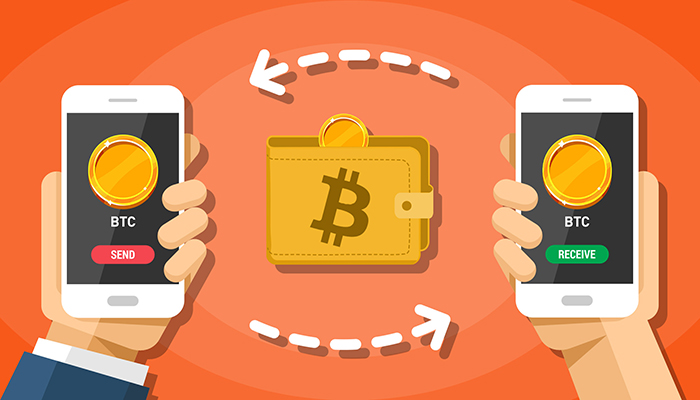How to send Bitcoin to an external BTC address

Have you just started your crypto journey and wondering how to send Bitcoin to another address. Transferring crypto between wallets is a relatively simple process that typically involves two key components: a cryptocurrency wallet containing some Bitcoin, and a public key address for completing the transaction. Since Bitcoin operates on a peer-to-peer network, only the two parties involved in the transaction need to be aware of it.
However, the exact process of transferring Bitcoin may vary slightly depending on the type of wallet being used. The process remains largely consistent across various other types of cryptocurrencies as well.
How to Easily Send Bitcoin: 3 Steps
Before you can do anything else, you must first set up a crypto wallet if you haven’t already. With virtually any crypto wallet, the process of executing a Bitcoin transfer follows the same basic steps. These steps are:
-
Enter Bitcoin Payment Address
To send Bitcoin, you must direct your transaction to the intended destination by entering the recipient wallet’s address. It is crucial to double-check the address before initiating the transaction.
Certain hardware wallets may prompt users to do so explicitly. Using a QR code address, whenever possible, might be the best way to guarantee accuracy.
-
Indicate The Amount of Bitcoin to Send
Next, input the amount of Bitcoin you want to transfer. Certain wallets offer the option of specifying the amount in fiat currency (such as U.S. dollars), but others just show the amount in BTC.
If a wallet supports multiple cryptocurrencies, it is essential to choose the appropriate coin. Sending Bitcoin (BTC) to a Bitcoin Cash (BCH) address, for instance, could lead to the permanent loss of funds.
Transferring any cryptocurrency to an address designated for a distinct cryptocurrency will typically result in its irrevocable disappearance – similar to sending cash to a stranger’s bank account without any way of getting it back.
For large transactions, it might be best to try a test transfer of a small amount of Bitcoin to make sure that the address is correct.
-
Initiate The Transfer
Finally, send Bitcoin to an indicated address by selecting “send” to broadcast the transaction. As mentioned earlier, some desktop wallets may mandate that users specify the network fee before completing the transaction, but some do not.
Also, transactions with higher fees are usually prioritized by Bitcoin miners and thus reach their destination more rapidly.
When utilizing exchange-hosted or most hardware wallets, the network fee is typically chosen automatically for the user, which tends to make things a lot easier.
How Much Does It Cost To Send Bitcoin
When a Bitcoin transaction is sent, it needs to be processed and recorded on the blockchain by miners or other participants. To compensate for their efforts, those initiating transactions typically pay a fee to the miners.
This fee usually comes in the form of a network fee, which is paid to the entities responsible for mining and validating data on the blockchain.
Understanding Bitcoin Fees
Fees for crypto transactions, including those for Bitcoin transfers, follow a supply and demand model. Essentially, a blockchain has limited resources, such as validators and miners, that can handle data and add it to the network. When there is high competition for these resources, fees tend to rise. Conversely, when demand is low, fees may be lower as well.
If you wish to expedite your transaction, paying a higher fee could potentially speed up the process. However, the fees for Bitcoin transactions are subject to change based on network supply and demand.
How To Set the BTC Network Fee
The specific procedure may vary depending on the crypto wallet you use, but typically, it involves configuring a personalized network fee during transaction setup. A lower fee will likely result in a lengthier transaction time, whereas a higher fee will speed up the process.
Ultimately, the supply and demand for crypto transactions play a crucial role, since validators and miners on the blockchain require a higher fee in order to make up for the increased energy cost.
Using The Bitcoin Blockchain
When transferring Bitcoin from one wallet to another, a digital transaction takes place in which addresses are exchanged, ownership data is transferred, and the transaction is recorded on the Bitcoin blockchain.
The process typically requires two cryptocurrency wallets, a Bitcoin address, and a transaction fee.
In practice, sending Bitcoin is often similar to sending money through another peer-to-peer platform like Venmo or PayPal.
Can You Send Bitcoin to Someone Without a Wallet?
To put it simply, it is not possible to send Bitcoin to someone who does not have a crypto wallet and instead, holds a traditional wallet as an individual. This is because without a digital address, there is no way to receive or send BTC.
It can be compared to mailing a letter without an address written on the envelope. The mail carrier would not know where to deliver it. However, some services offer workarounds that enable people to send Bitcoin to others using alternative methods such as email addresses.
In these instances, the recipient would still need to obtain a crypto wallet to receive their coins, but they would be held in a third-party wallet until then.
However, there are ways for business clients to accept payments in crypto without having to store coins in their wallets. Such crypto payment gateways as CoinsPaid, for example, allows its merchants to instantly exchange the received digital assets into fiat, that can be further withdrawn to a bank account via SEPA and SWIFT. CoinsPaid team is also fully responsible for the technical integration of crypto gateway into their clients businesses, eliminating the need for financial or crypto background and skills.
Another indirect way to own Bitcoin is through investment vehicles like Bitcoin-based exchange-traded funds (ETFs). These funds comprise a mix of investments, including stocks, bonds, and other assets. Crypto ETFs similarly contain a combination of crypto assets or crypto-backed assets, providing investors with market exposure. While not identical, this is an option to have some exposure to the Bitcoin market without using a wallet.
Summary
In conclusion, sending Bitcoin to a new wallet is a simple-enough process that can be done with just a wallet containing enough funds and the recipient’s address or QR code.
Regardless of the wallet used it’s important to keep in mind the fees associated with sending Bitcoin, but only the sender bears the responsibility for such costs.
Ultimately, transferring Bitcoin to a new wallet is a straightforward task that requires careful attention to detail.
Since all crypto wallets are capable of sending and receiving Bitcoin, it is always best to just use the one that you trust the most and are most comfortable with.
Follow – https://bitcointodays.com for More Updates




